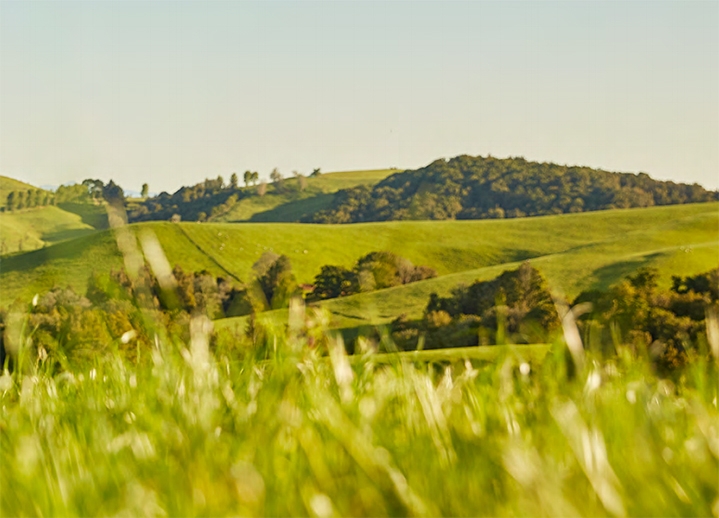
By Allan Barber
Since announcing its environment strategy in May, the Beef + Lamb New Zealand team responsible for developing the plans, processes and tools to help farmers achieve the ambitious goals of being carbon neutral by 2050 and every farm having an active farm plan by 2021 has been working flat out to get the right farm planning systems in place.
The strategy identifies four areas of focus – cleaner water, carbon neutrality, thriving biodiversity and healthy productive soils – with their own specific goals and a detailed implementation plan, supported by a series of what are termed ‘foundations’.
Initially there are two foundations which explicitly rely on the participation of individual farmers. The first is helping farmers navigate the myriad of farm environment plans out there so they can identify the one that complies with local regulations and is best suited to help them document their individual on farm environment plan; the second foundation will encourage the establishment and facilitation of catchment communities which are relevant to the farmers’ local areas. The remaining foundations have designated areas of responsibility for B+LNZ to undertake in support of work by farmers; they include extension programmes, decision support tools, research into evidence based policy, engagement with central and regional government on policy formation and legislation, and enabling farmer leadership.
When B+LNZ first developed its farm planning programme, it found it was ahead of the game, but a recent review has concluded it is no longer cutting edge, having been overtaken by private consultants’ and companies’ farm planning processes. The intention now is to enable farmers to prepare plans relevant to their own farms by helping them to follow a standard process which will vary between farms and catchment regions.
There will not be a ‘one size fits all’ template, but a process standard designed to be regularly updated on the principle of continuous improvement which will guide farmers through a series of steps – form a vision or policy statement, identify current and potential environmental impacts, assets and opportunities, develop an action plan, identify how progress will be self or externally audited and monitored, and then review and repeat the exercise.
An important aspect of this process will be links to other programmes across the primary sector, in particular RMPP’s NZ Farm Assurance Programme and Sustainable and Ethical Farm Assurance Programme, but also with the Good Farming Practice Action Plan and other farm planning work that is occurring. This will ensure the minimum amount of duplication, because different companies and consultants can be accredited and deliver farm plans for endorsement by B+LNZ
B+LNZ is currently developing the process standard in cooperation with Enviro-Mark Solutions, part of Landcare Research, and will hold five co-design workshops starting this month involving farmers and other stakeholders to develop a pilot by December for roll out in the first half of 2019. National data on the preparation of farm plans will be recorded and aggregated to enable measurement of progress towards the goal.
The second critical foundation is the community catchment programme which links individual farmers to others in their region, providing peer support and leading to the development of a shared vision. While not all farms in an area will have the same issues, there will be those that affect all farms in a particular catchment and the group can decide on the issues which they can most effectively address together.
Ideally the country will be divided into catchment areas, each of which will have an umbrella entity, such as an incorporated society, responsible for coordinating individual community catchment groups, making submissions to council and communicating with other organisations like B+LNZ on behalf of the members.
The process of setting up community groups is still in its early days with one example of how it can work in the King Country rivers and west coast catchment. The King Country River group was originally established because the farmers in the area felt they were not sufficiently well represented to deal with the Waikato Regional Council, whenever the southern and west coast region of the Waikato comes up for inclusion in a regional plan change.
Anna Nelson, a vet and, with husband Blair, past King Country Farmer of the Year has been appointed as part-time coordinator of the group. There are 580 farmers in the region and she hopes to set up 13 catchment groups, although the initial target is seven, of which three have already had a meeting. Her intention is to contact every farmer in the region to encourage them to join a group, although inevitably there will be some who don’t want to participate. She says this model may not suit every region, but it works well for the group she is coordinating. Each group member will be asked to pay an annual subscription to cover the costs of the coordinator, meetings and submissions.
B+LNZ’s challenge, if it is to achieve its environment strategy goals, is to encourage firstly all famers to develop their own environment plan and secondly join a regional community group, providing them with support, guidance and robust data on which to base their conclusions.
This article first appeared in Farmers Weekly. It is here with permission. Current schedule and saleyard prices are available in the right-hand menu of the Rural section of this website.
P2 Steer
Select chart tabs
1 Comments
Great to read the strategy. The power of a catchment group: http://pwcg.co.nz/


We welcome your comments below. If you are not already registered, please register to comment.
Remember we welcome robust, respectful and insightful debate. We don't welcome abusive or defamatory comments and will de-register those repeatedly making such comments. Our current comment policy is here.